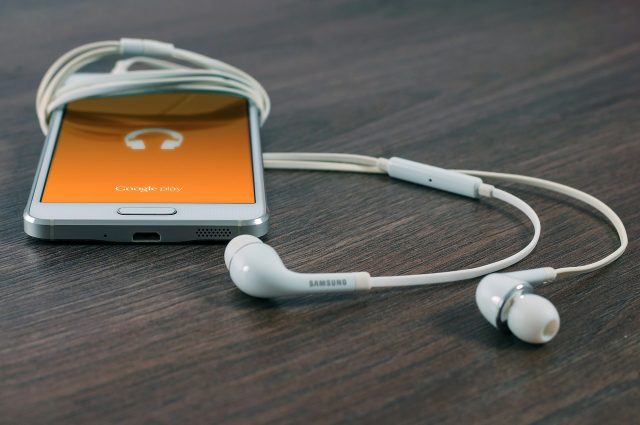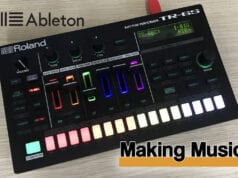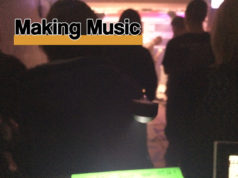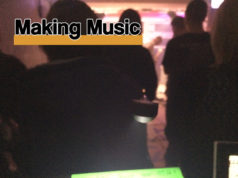Last Updated on October 8, 2016 by Andrew Culture
Headphones or monitors? The question used to divide much of the mixing community – and probably still does – but recent developments in music-listening habits have placed the subject back in the headlights.
At one time, virtually all professional mixing engineers would have said don’t mix on headphones full stop, but many are now relaxing their position. A little. In addition, many home studio owners don’t have any option but to mix on phones, or at least do most of their mixing on phones, so are these mixes doomed to failure?
Speakers vs Phones
The fact is, the sound you get from speakers is quite different from the sound you get from headphones. If a song is mixed for one playback system and listened to on that playback system, it’s not necessarily better or worse than the other. But a mix created on one system and played back on the other will sound at best different, and at worst pretty bad.
Some classical music recordings have been made using a binaural recording system which simulates the way we naturally hear sound, and simply sparkle when listened to through headphones.
What’s strange about current rock and pop music is that the vast majority of it is mixed with speakers but it’s listened to with ear buds! This is also true of dance music. While loudspeakers, preferably in a club, are its natural environment, you hear enormous amounts spilling from open-bud headphones on every street.
And it’s not as if the headphones/speakers difference is particularly subtle. You would imagine that even the most undemanding listener should easily be able to tell the difference between speaker and headphone playback. In fact, with favourite records, they may listen on phones when out and on speakers when in.
That might lead you to believe that the majority of listeners either simply can’t tell the difference or they simply don’t care. Not everyone is a musician – they simply like the tune or the beat or the sound, so my money is on the latter.
But that doesn’t mean that, as musicians and audio engineers, we can or should adopt the same attitude. In fact, I’d go so far as to say that to ignore headphone playback is to sell your music short and do an injustice to your listeners.
Science of stereo
There are several reasons why listening to music on headphones is different to listening to music on speakers so let’s get the science out of the way first.
The main difference is to do with spatial separation. With stereo speakers, the sound from the left speaker hits the left ear before it hits the right ear, and then the left ear gets a slightly-delayed sound from the right speaker. And vice versa, of course. Just to spell it out, both ears hear sounds from both speakers but the sound from the opposite speaker is slightly delayed.
In addition, the sound bounces around the surroundings adding ambience or the ‘room effect’. In small rooms or studios this may not be much but it’s there. It can have an effect on the frequencies, which affects our overall perception of the sound.
Then there’s the phenomenon of masking which is to do with the way we process sounds. If two identical sounds are played from the left and right speakers but one is around 15dB louder than the other, we hear the sound as if it were coming from the louder speaker alone. In other words, the quieter sound is masked.
Why headphones sound different
With headphones, the left ear only hears sounds coming from the left, and the right ear only hears sounds coming from the right. To produce a masking effect on headphones, one sound needs to be 60dB louder than the other. That’s a lot. You can imagine how that will skew a headphone mix when played through speakers. And the other way around, too.
Stereo positioning is particularly problematic with headphones. With speakers you can hear a sound move across the stereo image as you pan it and you can get a good idea of the width of the sound stage.
With headphones, the sound is more ‘in your head’ rather than ‘in front’ as it is with speakers. When you pan a sound using headphones it tends to ‘stick’ around a central position and then moves quickly to one side.
In addition, with speakers, the stereo image or sound stage is perceived as being around 60 degrees. With headphones it is 180 degrees.
On headphones, the sound doesn’t bounce around the room so there is absolutely no ambience. It’s like listening to music in an anechoic chamber. It’s not necessarily worse but it’s not natural.
Monitor speakers are designed for a flat frequency response and will usually produce a more accurate bass response. Normal hi fi headphones aren’t designed with a flat response in mind (although there are headphones designed for mixing) and colour the sound.
On the other hand, you often get greater clarity with headphones as the sound isn’t ‘muddied’ by left/right delays or room ambience. They can, therefore, often pick up clicks and noises that are hard to find or that go unnoticed on monitors.
Finally, ear fatigue is likely to set in more quickly with headphones so you need to take more breaks.
Mixing on headphones
So, looking at the pros and cons of mixing on headphones, you’ll see that headphones do have a few pros!
1. Headphones make it easier to spot clicks and noise.
2. If the material will be listened to on MP3 Players, it makes sense to mix – or, at the very least, check the mix – on headphones.
3. Even if you don’t expect the material to be listened to on headphones – it will be! So, again, check it on phones just to make sure it’s not totally out of whack.
4. If you’re mixing in an unfamiliar room, use headphones to listen to your reference material. Some engineers take their favourite headphones to a new mix and listen to their reference material on them. They’re familiar with the material, and comparing the headphones to the monitor playback helps get a feel for the monitors.
Problems with headphones-only mixes
1. Difficulty with accurate stereo placement.
2. Lack of bass end response.
3. Different frequency perception.
4. Wider sound stage (which may or may not be problematic).
5. Lack of ambience may make you overcompensate.
6. Headphones are likely to colour the sound more than good monitors, although some headphones are designed specifically for mixing – new models are released regularly so check Google for news and reviews.
Bottom line
Use headphones to check for noise during the mix, and check your mix for your listeners who will play it on MP3 Players.
If you’re constricted to headphones because of your environment, try to test the mix on monitors, too. Leave stereo positioning till last and try to do that on monitors.
Here’s a radical thought – why not create two mixes – one for speakers one for headphones?


















Very helpful thanks ,
Ian
This is quite an interesting article on headphones and will help in my research as well. I have created a website for noise cancelling headphones review where I have documented my research and given ratings to various headphones based on their features. Please feel free to checkout http://www.headyo.com where I review the best headphones in the market.